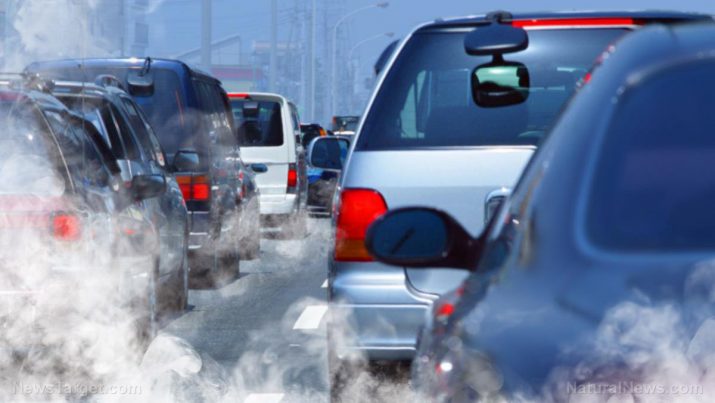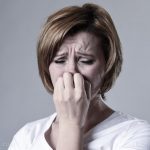
One-third of asthma cases in Europe linked to AIR POLLUTION: “Major lifestyle changes” are required to address the issue, say researchers
Tuesday, June 30, 2020 by Arsenio Toledo
http://www.naturalnewsresearch.com/2020-06-30-asthma-air-pollution-major-lifestyle-changes-required.html

A study has found that a third of childhood asthma cases in Europe may be caused by air pollution. The study, led by researchers at the Barcelona Institute for Global Health (ISGlobal), looked at the rates of asthma among 63 million children in 18 European countries.
The researchers estimated that more than 190,000 children in Europe become ill each year because they breathe in air pollutants. This pollution, which mostly comes from vehicular traffic, leads to the development of asthma, especially in children who are genetically predisposed to it.
The researchers stated that the World Health Organization’s (WHO) guidelines on air pollution levels are not strict enough to protect children from asthma.
Another study reported that, in Europe, asthma is the most common non-communicable disease in children. While the majority of these childhood asthma cases are mild, around 10 to 20 percent of them are severe, and recent calculations have estimated asthma cases to cost the European Union around 72 billion euros (around $80.107 billion) each year. (Related: Is pollution WORSE indoors? UK study fins households are “TOXIC boxes” that trap air pollution particles.)
Significant reduction in air pollutants necessary for better children’s health
The researchers came to the conclusion that hundreds of thousands of childhood asthma cases are linked to air pollution after looking at the burden of asthma on children across 18 European countries in 2016. They compared asthma incidence rates with estimated levels of exposure to air pollutants in 2010, which were often traffic-related in urban areas.
The researchers also considered two different scenarios – if European countries adhered to air pollutant levels recommended by the WHO, and if the levels of other pollutants, namely PM2.5 and nitrogen dioxide, were reduced. They then estimated how asthma incidence rates would change under these circumstances.
PM2.5 is particulate matter (PM) found in the atmosphere that is at least 2.5 micrometers in diameter. These particles come from a variety of sources, such as motor vehicles, airplanes, dust storms and volcanic eruptions. Nitrogen dioxide, on the other hand, is an air pollutant that contributes to the formation of smog. Like PM2.5, smog negatively affects human health. Around 80 percent of nitrogen dioxide in cities comes from exhaust from vehicles.
The researchers found that if European countries adhere to the maximum levels of PM2.5 recommended by the WHO, 66,567 cases of childhood asthma can be prevented, or around 11.4 percent of cases each year. But if nitrogen dioxide was also reduced based on the same recommendations, only 2,434 cases or 0.4 percent would be prevented.
On the other hand, if countries reduced their pollution levels to something even lower than WHO guidelines, then hundreds of thousands — or approximately 33 percent — of asthma cases can be prevented across 18 countries in Europe.
In the United Kingdom alone, if air pollution was reduced to the lowest levels the country has ever recorded (according to 41 previous studies), then 44,895 cases of childhood asthma could be prevented each year.
Furthermore, if a third pollutant, known as black carbon, was reduced to its lowest levels, another 89,191 cases of childhood asthma across Europe could be avoided annually.
“Major lifestyle changes” needed to reduce childhood asthma incidence
Mark Nieuwenhuijsen, one of the authors of the study, said that major lifestyle changes are needed for the amount of air pollution in the U.K. to reach the same levels seen in Scandinavian countries like Sweden and Finland, both of which have the best air quality in Europe.
Nieuwenhuijsen also said that a lot of the air pollution in Europe comes from cars, among other things. Reducing the number of cars, therefore, is essential – even electric cars, because while they release less nitrogen dioxide from their exhausts, electric cars still give off particulate matter from their brakes, their tires and from general wear and tear.
The goal that countries should be aiming for, according to Nieuwenhuijsen, is a reduction of the amount of motor vehicles in the streets. He believes that this can be achieved if countries willingly invest into more public transportation options and start giving incentives for cycling and walking.
Sources include:
Tagged Under: Tags: Air pollution, air quality, asthma, badhealth, badpollution, black carbon, car exhaust, childhood asthma, children's health, environment, nitrogen dioxide, particulate matter
RECENT ARTICLES


Zinc is an effective treatment for coronavirus infection, blocks viral replication

A mother’s workplace exposure to solvents may increase a child’s risk of autism, caution researchers

Elongated skulls unearthed in ancient Chinese tombs may indicate social status, researchers say… is there another explanation?

It’s okay to cry: Crying may have physiologically soothing effects, say scientists
By Zoey Sky
COPYRIGHT © 2017 NATURAL NEWS RESEARCH

